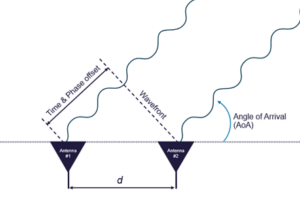Controlled Radiated Pattern Antenna (CRPA) is a specific setup designed to estimate signals' Angle of Arrival (AoA), whether they are genuine signals, interferences and/or spoofing, and mitigate them to get resilient positioning.
At least 4 antennas are necessary for CRPA, and it can get up to 8 or more.
The principle of the CRPA relies on the fact that a signal will be received by each antenna of a CRPA receiver with a specific delay and phase offset, depending on the direction of arrival and wavelength, as well as the relative positions of the antennas.

Based on the measured phase offset, the receiver can estimate the direction of arrival of a signal.
The receiver synthesizes a specific antenna gain pattern from a specific combination of the four antennas based on the estimated directions of arrival.
The goal is to maximize power from the genuine signals and minimize interference. This antenna gain pattern can be adjusted dynamically depending on the motion of the receiver or the sources of interference.